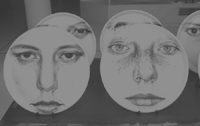On Outwitting AI…
Geoff: You might want to try zines.
Kay: Heard of them, would they help?
Geoff: As you know, they’re DIY, small-scale publications—usually handmade, often visually expressive. Tactile and personal, helps create a voice instead of generic AI output.
Kay: How would I frame them as an assessment device?
Geoff: Have students create a semester-long zine documenting their evolving perspective on the future of media—notes, sketches, experiments, even failed ideas.
Kay: AI could still generate some content, right?
Geoff: Possibly, but you can design prompts that are difficult for AI to answer meaningfully—like asking them to include autobiographical media experiences or classroom observations.
Kay: Right. Something like “Describe a media technology that changed the way your family communicates.” AI can’t fabricate their lived experience convincingly.
Geoff: Exactly. And you can require handwritten elements, collage work, or annotations on physical artifacts—ticket stubs, screenshots, receipts, doodles. Physically giving a break from screens, which is ironically relevant in a course on media futures.
Kay: We could have checkpoints—maybe mid-semester mini-zine submissions.
Geoff: And at the end, they turn in the final zine but keep a copy—either by scanning, photographing, or printing a second run. That way it becomes part of their own creative archive. Another idea: ask them to incorporate a prediction about future media that they track and revise over the semester.
Kay: A “living hypothesis” section! They could show erasures, edits, footnotes—almost like visible thinking.
__________
Voice-over
Visible thinking is key. AI can generate text, but it can’t reproduce the messy evolution of human insight.













No comments:
Post a Comment